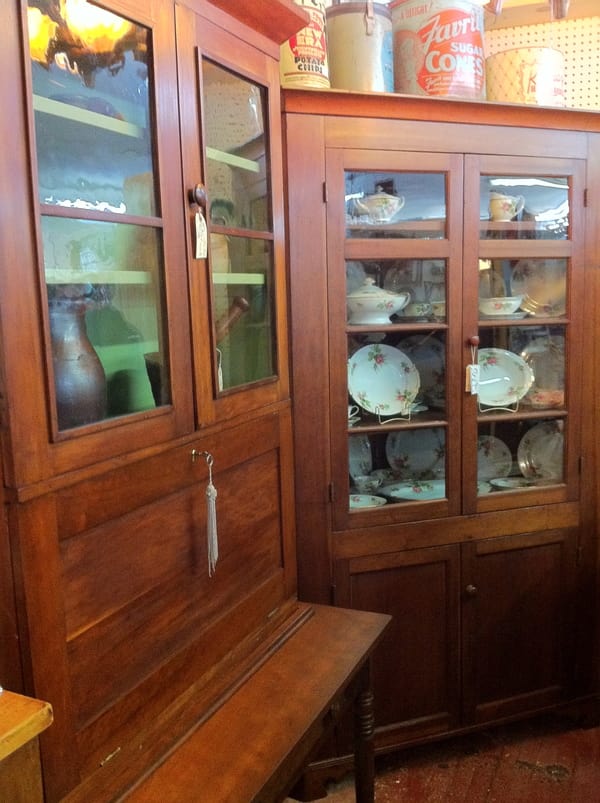A few days ago we visited an antique shop in a nearby town. It looked really good on the outside and when we first walked through the door. It had lots of large pieces of furniture on sides of aisles that were like labyrinths. Oil paintings and mirrors went to the tall ceilings. However, it didn’t take long to realize that those “Chippendale” mirrors had new glass and a few of the “George III style” case pieces and highboys were really, at best, “Federal Revival” or, worse, 1940’s “Federal Revival of a Revival” (our own term). To the dealer’s credit, there was no attribution of date on the finely printed price cards and the word “style” was added to the name of the period. But the pieces were expensive. We didn’t buy anything. We like completely honest labeling. Besides, why, if a piece was manufactured in the US in 1945, do we call it “George III” and not “Truman Era Federal Revival”?
But these things are easy to detect. So, generally, are “married” pieces where the top of one piece is added to the bottom of another. Harder to detect are the pieces that have been so skillfully repaired or embellished that it’s hard to see how much of it is original. As we all know from Roadshow, replacements of a foot or a finial do detract from value, but if it has been well done and the repair is small, the value of a great piece may not be harmed that much. But how much is too much? When does the face lift go too far? When is it really an effort to deceive?

We ran into the pieces above in an antique mall in another state. The prices were high. The labels both gave a date and no mention was made of repairs or the addition of new sections. The plantation desk, for example, was given the date of “circa 1800’s”. The interior had all been painted, clearly new, in a green. But most importantly, notice how the cornices of both pieces have the same finish and how the wood in both smooths out and shows no sign of wear as you go up. Notice, too, that the top shelf in the corner cupboard doesn’t match the other two shelves, but does match the thickness of the shelves in the plantation desk. Would, also, a corner cupboard have glass doors in that style? It had been marked “sold”. Had these been extensively repaired? If so, had the facelift gone too far? Should labels tell of repairs, especially if the owner of a booth is not present to authenticate a piece?

On the good side, we want to show two pieces, above, that we have no doubt about authenticity. Both were at last fall’s Antique Show at Locust Grove in Louisville. The chest would be Kentucky cherry piece, probably from around 1840. The price was very reasonable. The cupboard would have been much later and could have come from Ohio or Indiana. They were real. Neither had a face lift.
SKM: below-content placeholderWhizzco for DOT

